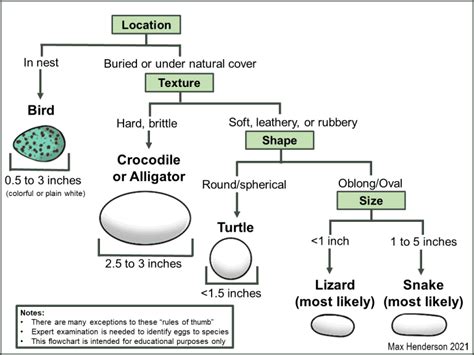
A massive clutch of nearly 100 reptile eggs, believed to be from a ball python, was recently unearthed in the backyard of a South Carolina home, setting a potential record for the species. Experts from the South Carolina Department of Natural Resources (SCDNR) and local reptile removal specialists were called in to carefully excavate and remove the eggs, highlighting the growing interactions between humans and wildlife in suburban areas.
The homeowner, whose name has not been publicly released, discovered the nest while gardening. Initially mistaking the eggs for something else, they quickly realized the scale of the reptile presence and contacted authorities. “It was quite a surprise,” said Bill Randell, a reptile removal expert involved in the extraction. “We’ve seen large clutches before, but almost 100 is exceptional, especially for a ball python in a residential setting.”
Ball pythons are not native to South Carolina, leading experts to believe the snake was either an escaped or released pet. The species is popular in the pet trade due to its docile nature and relatively small size. However, releasing non-native species into the wild can have significant ecological consequences, posing risks to native wildlife and potentially disrupting local ecosystems.
The SCDNR is currently investigating the origin of the snake and assessing the potential impact on the local environment. The eggs have been transported to a specialized facility where they will be monitored. According to Randell, the fate of the eggs will be determined in consultation with wildlife officials, considering factors such as the viability of the eggs and the potential ecological risks.
Discovery and Removal
The discovery occurred in a typical suburban backyard, illustrating the increasing overlap between human habitats and wildlife territories. As residential areas expand, encounters with various animal species become more frequent, necessitating careful management and responsible interaction. The homeowner’s decision to contact experts rather than attempting to handle the situation independently was crucial in ensuring the safe removal of the eggs and minimizing potential harm to both the reptiles and the surrounding environment.
Randell’s team meticulously excavated the nest, taking care to preserve the integrity of the eggs. The process involved carefully digging around the clutch, individually extracting each egg, and placing it in a temperature-controlled container. “We have to be very delicate during the removal process,” Randell explained. “These eggs are fragile, and any damage can affect their viability. Maintaining a stable temperature is also critical for their survival.”
The sheer number of eggs presented a logistical challenge. Transporting such a large clutch required specialized equipment and careful coordination with the SCDNR. The eggs were ultimately transferred to a secure facility where they could be monitored and assessed by reptile experts.
Non-Native Species and Ecological Impact
The presence of a ball python, a non-native species, raises concerns about the potential impact on the local ecosystem. Introduced species can compete with native wildlife for resources, prey on native animals, and introduce diseases to which native populations have no immunity. In some cases, non-native species can become invasive, causing significant ecological and economic damage.
“The introduction of non-native species is a serious issue,” said Dr. Emily Carter, a wildlife biologist with the SCDNR. “These animals can disrupt the delicate balance of our ecosystems and have devastating consequences for native wildlife. It’s crucial that we prevent the release of non-native species into the wild.”
Ball pythons, while generally harmless to humans, could potentially prey on small native animals, such as rodents and birds. Their presence could also disrupt the food chain and alter the dynamics of the local ecosystem. The SCDNR is conducting a thorough assessment to determine the potential impact of the ball python and develop strategies to mitigate any negative effects.
The Pet Trade and Responsible Ownership
The incident highlights the importance of responsible pet ownership, particularly when it comes to exotic animals. Ball pythons are popular pets, but they require specialized care and a long-term commitment. Many owners are unaware of the responsibilities involved in caring for these animals, and some may eventually release them into the wild when they become too difficult or expensive to maintain.
“Owning an exotic pet is a serious responsibility,” said Randell. “These animals have specific needs, and it’s crucial that owners are able to provide them with the proper care. Releasing an exotic pet into the wild is not only irresponsible, but it can also have devastating consequences for the environment.”
Prospective pet owners should thoroughly research the needs of any animal they are considering acquiring and ensure they are able to provide it with a suitable habitat, proper nutrition, and appropriate veterinary care. They should also be aware of the potential risks associated with owning exotic animals and take steps to prevent escapes or releases.
Legal Considerations
In South Carolina, it is illegal to release non-native species into the wild without a permit. Violators can face fines and other penalties. The SCDNR actively enforces these regulations to protect the state’s native wildlife and ecosystems.
“We take the issue of non-native species very seriously,” said Dr. Carter. “We will investigate any reports of released exotic animals and take appropriate action to protect our native wildlife. We urge anyone who is considering releasing an exotic pet into the wild to contact us first. We can help them find a suitable alternative.”
The SCDNR also encourages pet owners to microchip their animals, which can help facilitate their return if they are lost or stolen. Microchipping is a simple and effective way to ensure that pets can be identified and reunited with their owners.
The Fate of the Eggs
The fate of the nearly 100 ball python eggs remains uncertain. The SCDNR is consulting with reptile experts and wildlife officials to determine the best course of action. Several options are being considered, including allowing the eggs to hatch in a controlled environment, euthanizing the eggs, or donating them to a research facility.
“We are carefully weighing all of our options,” said Dr. Carter. “Our primary concern is the health and safety of our native wildlife and ecosystems. We will make a decision that is in the best interest of the environment.”
If the eggs are allowed to hatch, the hatchlings would likely be placed in captivity, either at a zoo, wildlife sanctuary, or research facility. They would not be released into the wild due to the risk of establishing a breeding population of non-native snakes.
Public Awareness and Education
The incident serves as a reminder of the importance of public awareness and education about non-native species and responsible pet ownership. The SCDNR and other organizations offer a variety of educational programs and resources to help people learn about the risks associated with releasing exotic animals into the wild.
“Education is key to preventing the introduction of non-native species,” said Randell. “We need to educate people about the responsibilities of pet ownership and the potential consequences of releasing exotic animals into the wild. By working together, we can protect our native wildlife and ecosystems.”
The SCDNR encourages the public to report any sightings of non-native animals to their local wildlife agency. Early detection and rapid response are crucial for preventing the establishment of invasive species.
The Future of Human-Wildlife Interactions
As human populations continue to grow and expand into wildlife habitats, encounters between humans and animals are likely to become more frequent. It is essential that we develop strategies for managing these interactions in a way that protects both humans and wildlife.
“We need to find ways to coexist with wildlife,” said Dr. Carter. “This requires careful planning, responsible behavior, and a commitment to conservation. By working together, we can create a future where humans and wildlife can thrive.”
This incident with the ball python eggs underscores the need for proactive measures to prevent the release of non-native species and mitigate their potential impact on the environment. It also highlights the importance of responsible pet ownership and public awareness about the ecological consequences of introducing exotic animals into the wild.
The discovery of nearly 100 reptile eggs in a South Carolina backyard is a stark reminder of the complex challenges facing wildlife managers and the importance of responsible stewardship of our natural resources. The SCDNR’s investigation and the subsequent decisions regarding the fate of the eggs will have significant implications for the local ecosystem and serve as a valuable case study for addressing similar issues in the future. The incident calls for greater public awareness, responsible pet ownership, and proactive measures to protect native wildlife and ecosystems from the threats posed by non-native species.
The incident also emphasizes the crucial role of collaboration between homeowners, reptile removal specialists, and state agencies in addressing these types of situations. The homeowner’s quick action in contacting experts, combined with the expertise of Randell’s team and the resources of the SCDNR, ensured the safe removal of the eggs and minimized potential harm to the environment. This collaborative approach serves as a model for addressing future human-wildlife interactions and underscores the importance of community involvement in conservation efforts.
Moreover, this event highlights the need for ongoing research and monitoring of non-native species populations. Understanding the distribution, behavior, and ecological impact of these species is essential for developing effective management strategies and preventing future invasions. The SCDNR’s commitment to investigating the origin of the ball python and assessing its potential impact on the local ecosystem is a critical step in this process.
The long-term consequences of this incident remain to be seen, but it serves as a valuable lesson about the interconnectedness of ecosystems and the importance of responsible human actions. By learning from this experience, we can work towards a future where humans and wildlife can coexist harmoniously and where the integrity of our natural environment is preserved for generations to come.
The sheer size of the clutch, almost 100 eggs, also raises questions about the reproductive capabilities of ball pythons in non-native environments. While these snakes are known to reproduce in captivity, the successful laying and incubation of such a large clutch in a suburban backyard suggests that they may be more adaptable to new environments than previously thought. This finding underscores the need for further research into the reproductive biology of non-native species and the factors that contribute to their successful establishment in new habitats.
Furthermore, the incident highlights the ethical considerations surrounding the pet trade in exotic animals. While ball pythons are not considered to be particularly dangerous or difficult to care for, the fact that one was found breeding in the wild underscores the potential for even seemingly harmless pets to have a negative impact on the environment. This raises questions about the regulation of the pet trade and the need for stricter enforcement of laws designed to prevent the release of non-native species.
The discovery of the ball python eggs in South Carolina is not an isolated incident. Similar cases have been reported in other states and countries, highlighting the global scale of the problem of invasive species. Addressing this challenge requires a coordinated effort at the local, national, and international levels. This includes strengthening border controls to prevent the introduction of new invasive species, implementing stricter regulations on the pet trade, and promoting public awareness about the risks associated with releasing non-native animals into the wild.
In conclusion, the “Backyard Nest Yields Record Reptile Egg Haul!” incident is a multifaceted event with far-reaching implications. It underscores the importance of responsible pet ownership, the need for proactive measures to prevent the release of non-native species, and the crucial role of collaboration between homeowners, reptile removal specialists, and state agencies in addressing human-wildlife interactions. The incident also highlights the ethical considerations surrounding the pet trade in exotic animals and the global scale of the problem of invasive species. By learning from this experience, we can work towards a future where humans and wildlife can coexist harmoniously and where the integrity of our natural environment is preserved for generations to come.
Frequently Asked Questions (FAQs)
1. What type of reptile eggs were found in the South Carolina backyard?
The eggs are believed to be from a ball python (Python regius). Bill Randell, a reptile removal expert, stated that finding almost 100 eggs is exceptional, especially for a ball python in a residential setting.
2. Are ball pythons native to South Carolina?
No, ball pythons are not native to South Carolina. They are native to Central and Western Africa. Their presence in South Carolina suggests they were either escaped or released pets.
3. What is the potential impact of a non-native ball python on the local ecosystem?
The introduction of non-native species like the ball python can disrupt the local ecosystem. They may compete with native species for resources, prey on native animals, and potentially introduce diseases. Dr. Emily Carter, a wildlife biologist with the SCDNR, emphasized the serious nature of introducing non-native species, highlighting their potential to disrupt the balance of ecosystems and devastate native wildlife.
4. What will happen to the ball python eggs that were removed?
The eggs have been transported to a specialized facility where they will be monitored. The South Carolina Department of Natural Resources (SCDNR) is consulting with reptile experts and wildlife officials to determine the best course of action, which could include allowing the eggs to hatch in a controlled environment, euthanizing the eggs, or donating them to a research facility. The decision will prioritize the health and safety of native wildlife and ecosystems.
5. What should I do if I find a non-native animal in my yard?
It is best to contact your local wildlife agency or animal control. Do not attempt to handle the animal yourself, as it could be dangerous or harmful to the animal. Early detection and rapid response are crucial for preventing the establishment of invasive species. The SCDNR encourages the public to report any sightings of non-native animals to their local wildlife agency.
The sheer number of eggs (nearly 100) is noteworthy because ball pythons typically lay between 4 and 12 eggs in a clutch in the wild. Clutch sizes can be larger in captivity due to controlled environments and readily available food sources, but a clutch of nearly 100 is exceptionally rare, even in captive settings. This exceptional clutch size adds to the ecological concerns. If a substantial number of these eggs were to hatch and the offspring were to survive, the impact on the local ecosystem could be more significant than initially anticipated. A larger population of non-native predators could exert more pressure on native prey species and further disrupt the delicate balance of the ecosystem.
The discovery also raises concerns about the potential for ball pythons to establish a breeding population in South Carolina. While the climate in South Carolina is not ideal for ball pythons, they are adaptable reptiles and could potentially survive and reproduce in certain microclimates, such as areas with warmer temperatures and ample shelter. If a breeding population were to become established, it could be difficult to control or eradicate, posing a long-term threat to the local ecosystem.
The long-term ecological consequences of introducing non-native species can be difficult to predict with certainty. However, studies have shown that invasive species can have a wide range of negative impacts on ecosystems, including reducing biodiversity, altering habitat structure, and disrupting food webs. In some cases, invasive species can even drive native species to extinction.
The introduction of non-native species is a global problem that is exacerbated by increasing international trade and travel. As people and goods move around the world, they can inadvertently transport non-native species to new locations. Preventing the introduction of non-native species is a major challenge, but it is essential for protecting biodiversity and maintaining healthy ecosystems.
One of the most effective ways to prevent the introduction of non-native species is to strengthen border controls and inspection procedures. This can help to prevent the accidental introduction of non-native species through cargo shipments, passenger luggage, and other pathways. Another important strategy is to educate the public about the risks associated with releasing exotic animals into the wild. Many people are unaware of the potential consequences of releasing a pet into the wild, and they may do so without realizing the harm they are causing.
In addition to preventing the introduction of new non-native species, it is also important to manage existing populations of invasive species. This can be done through a variety of methods, including trapping, hunting, and the use of herbicides and pesticides. However, controlling or eradicating invasive species can be difficult and expensive, and it is often necessary to use a combination of methods to achieve success.
The discovery of the ball python eggs in South Carolina serves as a reminder of the importance of responsible environmental stewardship. We all have a role to play in protecting biodiversity and preventing the spread of invasive species. By being aware of the risks associated with non-native species and taking steps to prevent their introduction and spread, we can help to ensure that our ecosystems remain healthy and resilient for future generations. The case highlights the complexity of managing human-wildlife interactions in an increasingly urbanized world. As human populations expand and encroach upon natural habitats, encounters between humans and wildlife are becoming more frequent. This presents both challenges and opportunities for conservation. On the one hand, increased human activity can disrupt ecosystems and threaten wildlife populations. On the other hand, it can also raise awareness about the importance of conservation and inspire people to take action to protect the environment.
To effectively manage human-wildlife interactions, it is essential to have a clear understanding of the ecological needs of wildlife and the potential impacts of human activities. This requires careful research and monitoring, as well as close collaboration between scientists, wildlife managers, and local communities. It is also important to develop policies and regulations that protect wildlife and their habitats while also allowing for sustainable human development.
In the case of the ball python eggs, the prompt response of the homeowner in contacting experts was crucial in preventing the situation from escalating. This highlights the importance of educating the public about how to respond to encounters with wildlife. People should be encouraged to report sightings of unusual animals to their local wildlife agency and to avoid attempting to handle or capture wildlife on their own.
The successful removal of the ball python eggs also demonstrates the effectiveness of collaboration between different stakeholders. The reptile removal specialist, the SCDNR, and the homeowner all worked together to ensure a positive outcome. This collaborative approach is essential for addressing complex conservation challenges and for building a sustainable future for both humans and wildlife.
The incident also underscores the importance of responsible pet ownership. People who own exotic pets have a responsibility to ensure that their animals do not escape or become a threat to the environment. This includes providing adequate housing and care for their pets, as well as taking steps to prevent them from breeding or being released into the wild.
The long-term solution to the problem of invasive species is to prevent their introduction in the first place. This requires a concerted effort to strengthen border controls, regulate the pet trade, and educate the public about the risks associated with non-native species. It also requires a commitment to sustainable development and to protecting natural habitats from human encroachment. By working together, we can create a world where humans and wildlife can coexist harmoniously and where the biodiversity of our planet is preserved for future generations.









